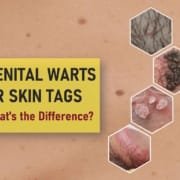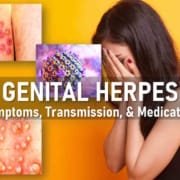Blue Waffle Disease: Does this STD Really Exist?
What is Blue Waffle Disease?
The term “blue waffle” has circulated widely on the internet, creating alarm and misinformation. Allegedly, it describes a sexually transmitted disease (STD) that turns the vaginal area blue. However, “blue waffle disease” is not a real medical condition. This article aims to debunk the myths surrounding this fictitious disease and emphasizes the critical need for accessible and reliable sexual health information online. Additionally, it provides insights into real STDs and their possible symptoms.
Understanding the Blue Waffle Myth
The “blue waffle” hoax began in 2008, with trolls and pranksters perpetuating a meme that misled many viewers into believing in a fictitious STD. Trolls often encouraged unsuspecting individuals to search for an image of a blue waffle on Google Images, leading them to a shocking close-up of a diseased vagina. Despite claims and even doctored photographs showing a blue-colored vulva, no such infection exists. The spread of this misinformation is a stark example of how false rumors can proliferate rapidly on the internet. A 2018 study highlighted that false information tends to reach more people and spread faster than the truth. This phenomenon underscores the danger of misinformation in the digital age.
Blue Waffle Hoax Spreads to Real Life
In Trenton, New Jersey, the Blue Waffle hoax reached a new level of infamy when a councilwoman named Kathy McBride fell victim to it during a City Council meeting in 2013. McBride received a call from a concerned resident inquiring about the city’s efforts to combat Blue Waffle disease, highlighting the widespread belief in the fictitious condition. This incident illustrates how online misinformation can seep into real-world discussions and decisions, causing unnecessary panic and confusion.
Variations of the Shock Sites
As the meme gained popularity, numerous shock sites were created to capitalize on its notoriety. These sites typically displayed the image alongside a brief description. The original image first appeared on the website Documenting Reality. It depicts a yeast infection treated with an antibacterial dye known as crystal violet. The success of the Blue Waffle hoax inspired several variations, each designed to shock and disgust viewers:
- Red Pancake: This variation features an image of a diseased anus, likely infected with anal warts or HPV.
- Giant Cheese Taco: This site displays a graphic image of a diseased, ulcerated vagina covered in yellow pus and blood.
- Genetic Waffle: Emerging around late 2011, this site featured a pornographic image of a vagina suffering from either prolapse or vulvitis. Created by Heyya.org, the site’s name and content were inspired by the Blue Waffle meme. Like the other shock sites, Genetic Waffle has since been shut down.
The Role of Sex Education
The Blue Waffle disease hoax highlights a critical issue: the lack of comprehensive sex education. In the United States, sex education varies significantly in quality and content. According to the CDC’s 2018 School Health Profiles, less than half of high schools and less than one-fifth of middle schools teach all 20 recommended sexual health topics. This deficiency leaves many young people uninformed about STDs and how to prevent them.
Comprehensive sex education should cover a wide range of topics, including:
- The nature and transmission of STDs
- Safe sex practices and the use of barrier methods like condoms and dental dams
- The importance of regular STD testing
- Recognizing and responding to symptoms of STDs
Without proper education, young people may turn to the internet for answers, where they risk encountering and believing false information like the Blue Waffle myth.
Real STDs and Their Symptoms
While Blue Waffle disease is fictional, several real STDs pose genuine risks. According to the Centers for Disease Control and Prevention (CDC), there were 26 million new STD infections in 2018, with nearly half affecting young people aged 15 to 24 years. STDs can be caused by bacteria, viruses, or parasites, and over 20 types are recognized by healthcare professionals.
Common STDs and Their Symptoms
Detailed information on sexually transmitted diseases (STDs), types of STDs, their symptoms, treatments, and precautions is available in the article titled “Sexually Transmitted Diseases (STDs): Symptoms, Types, and Precautions“. Some of the common STDs and their symptoms are briefly listed below:

- Chlamydia: Often asymptomatic, but can cause genital pain and discharge from the vagina or penis. For more information see “Chlamydia: Causes, Symptoms, Treatment & Prevention“.
- Gonorrhea: Symptoms include painful urination, abnormal discharge from the penis or vagina, and testicular pain in men. For more information about Gonorrhea see “Gonorrhea: Symptoms, Treatment & Prevention“.
- Trichomoniasis: This parasitic infection can cause itching, burning, redness, or soreness of the genitals and discomfort during urination.
- Genital Herpes: Characterized by painful blisters or sores on the genital area. For more information see “Genital Herpes: Symptoms, Pictures, and Medication“.
- Human Papillomavirus (HPV): Some strains cause genital warts, while others can lead to cancer. For more details about Human Papillomavirus (HPV) Infection read “Human Papillomavirus (HPV) Infection: Symptoms and Prevention“.
- Syphilis: This bacterial infection can cause sores, rashes, and serious health complications if left untreated. For more information, see “Syphilis: Symptoms, Causes, and Treatments“.
- HIV/AIDS: HIV is a virus that attacks the immune system, potentially leading to AIDS, which is characterized by a severely weakened immune response. For more details about HIV (Human Immunodeficiency Virus) read “HIV / AIDS: Symptoms, Diagnosis, Treatment, and Prevention”.
These STDs can cause symptoms similar to those falsely attributed to Blue Waffle disease, such as unusual discharge, itching, and irritation. However, no STD causes the genital area to turn blue.
Addressing Misinformation and Importance of Reliable Sexual Health Information
Reliable information about sexual health is crucial for preventing STDs and promoting overall health. Misinformation can lead to unnecessary panic and may cause people to make ill-informed decisions about their sexual health. Trustworthy sources of information include healthcare providers, official public health organizations, and educational institutions.
The spread of the Blue Waffle myth underscores the need for improved sex education and better dissemination of accurate information. With the rise of artificial intelligence (AI) tools that can generate strikingly real images and videos, spreading such misinformation has become much easier. Educators and health professionals must work to provide clear, factual, and accessible information about sexual health. This includes debunking myths and addressing misinformation directly.
Tips for Identifying Reliable Sources
- Check the Credentials: Reliable sources often have credentials from recognized medical institutions or public health organizations.
- Look for Citations: Trustworthy articles cite their sources, allowing readers to verify the information.
- Cross-Reference Information: Compare the information with other reputable sources to ensure consistency.
- Beware of Sensationalism: Reliable health information should be factual and straightforward, not sensational or alarmist.
Safe Sex Practices
Safe sex practices are essential for reducing the risk of STD transmission. The CDC recommends using barrier methods such as latex condoms, which are highly effective in preventing the spread of STDs. However, it is important to note that birth control pills do not protect against STDs.
Regular STD testing is crucial for sexually active individuals, even if they use barrier methods. Many STDs do not produce symptoms, so a person could be infected without knowing it. Early detection through testing makes treating STDs easier and helps prevent the spread to others.
Frequently Asked Questions
What are the symptoms of Blue Waffle?
Blue Waffle disease is not a real condition. Online rumors falsely claim that it causes the vulva to turn blue. However, this is impossible. The other symptoms attributed to Blue Waffle, such as irritation and unusual discharge, are possible symptoms of real STDs. If you experience these symptoms, it is important to seek medical advice.
How long does Blue Waffle last?
Since Blue Waffle disease is not real, it does not have a duration. Real STDs, such as chlamydia, require treatment with antibiotics, usually for about a week. Some STDs, like genital herpes, are incurable but manageable with medication.
Conclusion
The Blue Waffle disease is a fabricated STD, yet it serves as a powerful reminder of the dangers of misinformation. The persistence of this myth highlights the need for comprehensive sex education and reliable sources of information. By promoting accurate knowledge about STDs and safe sex practices, we can help individuals make informed decisions about their sexual health and prevent the spread of real STDs.










